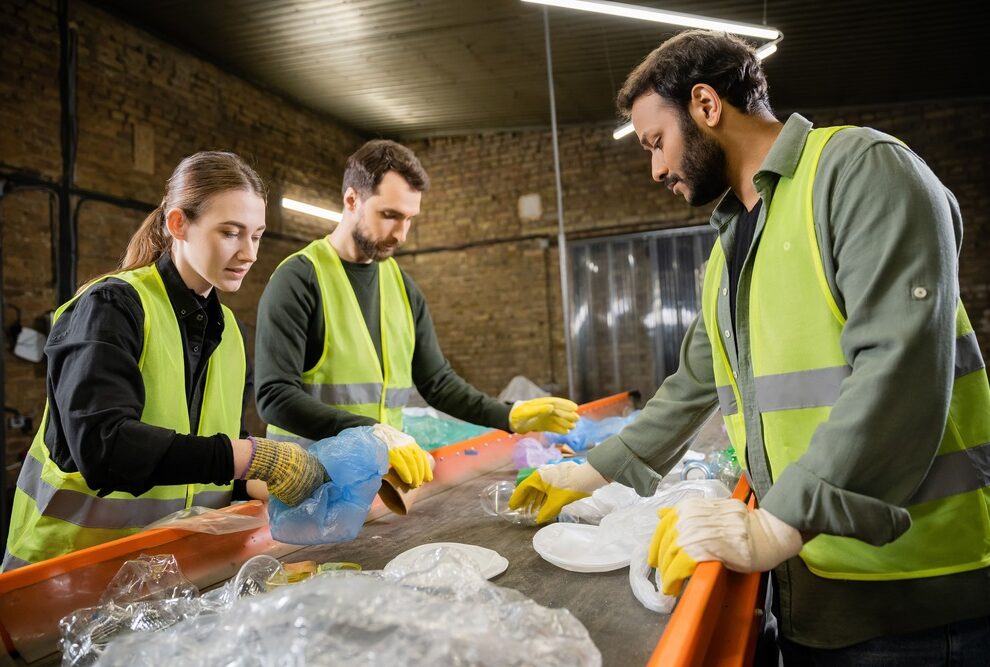
Finest Project: Reinventing Raw Material Cycles in Industry

FINEST project selected in the Helmholtz Association’s sustainability challenge.
Industrial processes are inevitably associated with the generation of fine-grained residues. These rarely find re-entry into the industrial value chain. Typically, they are disposed of and represent a potential environmental risk. In the FINEST project, coordinated by the Helmholtz Institute Freiberg for Resource Technology (HIF) at the Helmholtz-Zentrum Dresden-Rossendorf (HZDR), various fine-grained material streams of anthropogenic origin are being recorded and investigated. The investigations aim to develop novel concepts for their processing in order to keep them in the cycle and to safely dispose of remaining residual materials.
Starting in July 2022, the researchers from the six participating institutions will work on the five-year project on ultrafine materials of anthropogenic origin, such as microplastics, mineral additives and metal-containing dust, for which there are currently hardly any recycling options. Innovative processes are to be used to increase the currently still very low recycling rates of these fine particulate materials and to deposit the remaining residual materials harmlessly in order to advance a sustainable Circular Economy.

The approach is not to treat different fine material streams separately, but to investigate the extent to which a mixture changes the properties of the particles in such a way that they can be recycled more effectively, efficiently and in higher proportions. Within three subprojects, organic, metallic and fines that could be recycled into cement are being investigated. Material characterizations, findings on technological processes, and a technological and economic-ecological evaluation are intended as cross-sectional tasks to promote the exchange of information between the subprojects and thus promote the recycling and reuse of the materials overall. HIF director Dr. Jens Gutzmer is convinced: “With the FINEST project, we are facing a mammoth task. But the innovative approach can make an important contribution to the Circular Economy. In addition, the transdisciplinary orientation will provide a relevant impetus to industry so that the fine-grained residues generated in many places can be sustainably recycled in the future.”
Research school for efficient resource management
A key component of the project work is the establishment of a research school. Over the next five years, 12 doctoral students will be trained as inter- and transdisciplinary experts in efficient resource management. In addition to special subject-specific courses, the doctoral students will also be offered interdisciplinary courses such as “Life-Cycle Thinking”, “Industrial Ecology” or “Data Management”, as well as workshops in which the students’ transdisciplinary knowledge and understanding will be expanded. With the acquired professional knowledge and transfer skills, the young professionals should preferably work in the industrial sector. The aimed “transfer over heads” is to ensure a transformation in the direction of holistic value chains and contribute to a sustainable Circular Economy. The research school is headed by Prof. Dr. Urs Peuker from the TU Bergakademie Freiberg: “The interplay between our own research activities and the transfer of additional relevant knowledge is an important building block for a holistic education of our young talents. Especially the field of the Circular Economy, where so many aspects interact, benefits scientifically and technologically from the concept of a research school. There is also a very high demand for excellent specialists and managers in this field of technology in the economy.”
Transfer to the public
The intended transfer of findings into industrial application is not only covered by the training of doctoral students, but also secured by a transfer desk. As much as 40% of the total budget is available to coordinate transfer activities with industry and other relevant players. Another important task of the Transfer Desk is to communicate the knowledge gained to the general public. This is to be realized via events in cooperation with cultural institutions, such as museums or theaters, and to raise awareness on the topic of resource management. The FINEST project is thus an ideal combination of scientific excellence and tailored networking with application-oriented training of the next generation of managers for industry and academia. “With the research school, FINEST plans a career-focused transfer over heads. Further knowledge transfer will be provided in the discussion of regulatory hurdles to closing a major gap in the Circular Economy. We look forward to a dedicated team that will promote intrapreneurship and entrepreneurship in addition to the technical training of the doctoral students,” says Dr. Björn Wolf, head of the Technology Transfer and Innovation department at HZDR.
Wissenschaftliche Ansprechpartner:
Dr. Stefan Dirlich | Project Coordinator
Helmholtz Institute Freiberg for Resource Technology at HZDR
Phone: +49 351 260 4413 | Email: s.dirlich@hzdr.de
Dr. Axel Renno | Department Analytics
Helmholtz Institute Freiberg for Resource Technology at HZDR
Phone: +49 351 260 4755 | Email: a.renno@hzdr.de
Prof. Dr. Urs Peuker | Institute of Mechanical Process Engineering and Mineral Processing
TU Bergakademie Freiberg
Phone: +49 3731 39-2916 | Email: urs.peuker@mvtat.tu-freiberg.de














